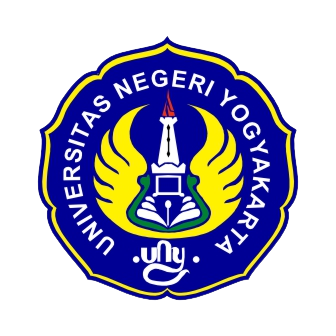Design and Implementation of a Student Counting and Monitoring System in a Laboratory Using Human Tracking Method with OpenCV and TensorFlow
DOI:
https://doi.org/10.21831/jraee.v2i1.554Keywords:
Laboratory, Object Detection, Human Tracking, Machine LearningAbstract
Laboratories serve as crucial facilities supporting practical activities, with a recommended maximum of 20 students, necessitating periodic monitoring to count the dynamic number of students within. The system utilizes the COCO dataset labeled ”person,” involving an approach with entry and exit preference lines, ID identification implementation, and object detection models YOLO v3 Tiny and Faster R-CNN ResNet50. The main system components, Raspberry Pi 3 Model B+, Raspberry Pi Camera 5 MP (f/1.3), and Raspberry Pi 7-inch Touch Display, are integrated for processing, real-time video recording, and image display functions. Test and evaluation results reveal that YOLO v3 Tiny achieves an 88.24% accuracy for entry counting and 75% for entry-exit counting, with an average processing rate of 4.89 FPS, while Faster R-CNN ResNet50 demonstrates lower accuracy, reaching 70.59% and 45.83%, with an average processing rate of 0.58 FPS.
Downloads
References
F. A. Hariz, I. N. Yulita, and I. Suryana, “Human Activity Recognition Berdasarkan Tangkapan Webcam Menggunakan Metode Convolutional Neural Network (CNN) Dengan Arsitektur MobileNet,” JITSI: Jurnal Ilmiah Teknologi Sistem Informasi, vol. 3, no. 4, pp. 103-115, 2022, doi: 10.30630/jitsi.3.4.97.
M. I. H. Azhar, F. H. K. Zaman, N. M. Tahir, and H. Hashim, “People Tracking System Using DeepSORT,” In 2020 10th IEEE International Conference on Control System, Computing and Engineering (ICCSCE), 2020, pp. 137-141, doi: 10.1109/ICCSCE50387.2020.9204956.
M. C. Le, M. H. Le, and M. T. Duong, “Vision-Based People Counting for Attendance Monitoring System,” In 2020 5th International Conference on Green Technology and Sustainable Development (GTSD) IEEE, Nov. 2020, pp. 349-352, doi: 10.1109/GTSD50082.2020.9303117.
F. Indaryanto, A. Nugroho, and A. F. Suni, “Aplikasi Penghitung Jarak Dan Jumlah Orang Berbasis YOLO Sebagai Protokol Kesehatan COVID-19,” Edu Komputika Journal, vol. 8, no. 1, pp. 31-38, 2021, doi: 10.15294/edukomputika.v8i1.47837.
J. Luo, Y. Wang, and Y. Wang, “Real-Time Pedestrian Detection Method Based on Improved YOLOV3,” In Journal of Physics: Conference Series, vol. 1453, no. 1, p. 012149, 2020, doi; 10.1088/1742- 6596/1453/1/012149.
G. Gallo, F. Di Rienzo, F. Garzelli, P. Ducange, and C. Vallati, “A Smart System for Personal Pro- Tective Equipment Detection in Industrial Environments Based on Deep Learning at the Edge,” IEEE Access, 2022, pp. 110862-110878, doi: 10.1109/ACCESS.2022.3215148.
S. A. Velastin, R. Ferna´ndez, J. E. Espinosa, & A. Bay, “Detecting, Tracking and Counting People Getting On/off a Metropolitan Train Using a Standard Video Camera,” Sensors, vol. 20, no. 21, p. 6251, 2020, doi: 10.3390/s20216251.
W. Liu, X. Du, Q. Geng, J. Li, H. Li, and L. Liu, “Metro Passenger Flow Statistics Based on YOLOV3,” In IOP Conference Series: Materials Science and Engineering, IOP Publishing, vol. 688, no. 4, p. 044025, 2019, doi: 10.1088/1757-899X/688/4/044025.
I. Ahmed, M. Ahmad, A. Ahmad, & G. Jeon, “Top View Multiple People Tracking by Detection Using Deep Sort and YOLOV3 With Transfer Learning: Within 5G Infrastructure,” International Journal of Machine Learning and Cybernetics, vol. 12, 3053-3067, 2021, doi: 10.1007/s13042-020-01220-5.
Y. W. Hsu, T. Y. Wang, and J. W. Perng, “Passenger Flow Counting in Buses Based on Deep Learning Using Surveillance Video,” Optik, vol. 202, p. 163675, 2020, doi: 10.1016/j.ijleo.2019.163675.






